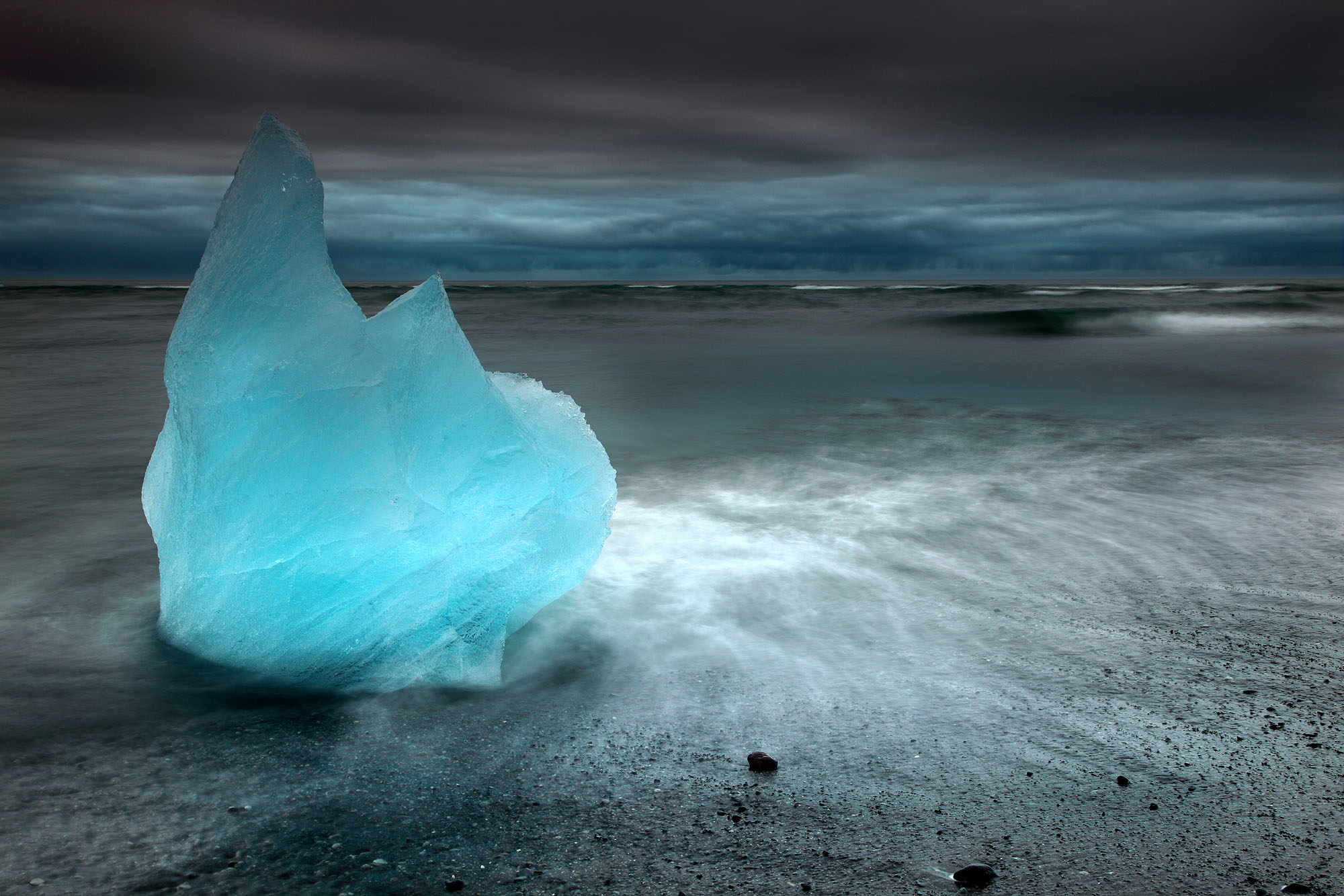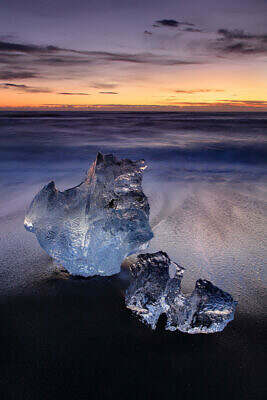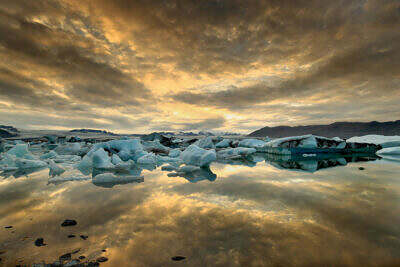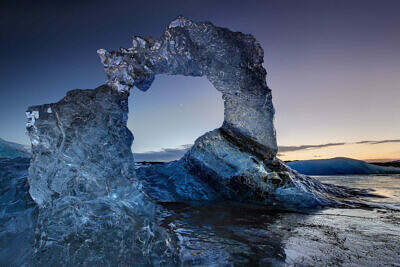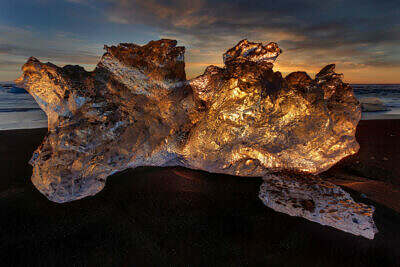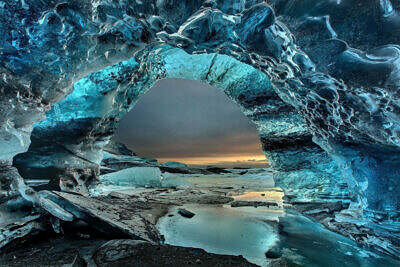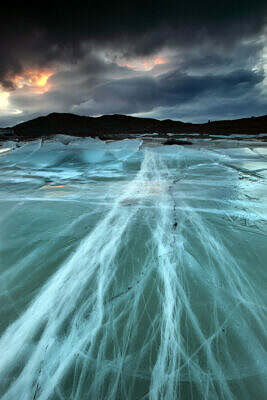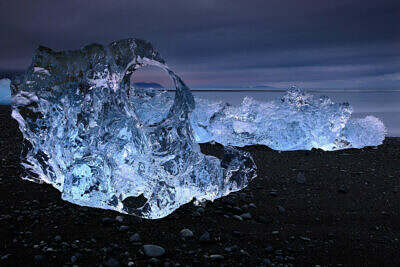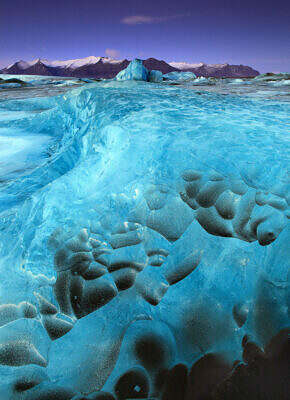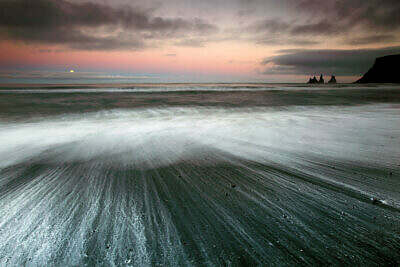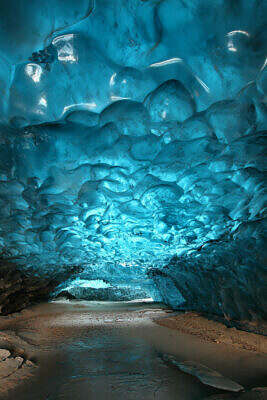This deep blue iceberg beached at Jökulsárlón Strandur in Iceland shortly before midnight in midsummer. Encircled by calm waves during low tide, his destiny awaits him with the rising waters of the Atlantic Ocean at the next high tide.
Each of the beached icebergs is unique and the scenery is so evanescent that after a few hours the rising tide leaves no trace of these beauties.
-
The ice of the icebergs at Diamond Beach in Iceland is 1000 years old
Evanescence
- Beached Jewels
- Twilight of the Gods
- Arctic Gate
- Elucidated
- The Crystal Grotto
- The Spirit of Iceland
- Crystal Beach
- Nature’s Artwork
- Lovelier in Black
- Entering the Enchanted Realm

